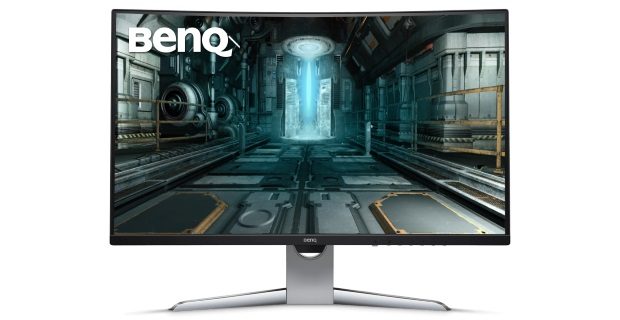After a lot weeping and gnashing of teeth and disappointing first looks, correct, sincere to goodness HDR lastly appears to be like prefer it’s about to turn out to be a actuality on PC. We’ve already seen how AMD’s FreeSync 2 tech made the Samsung CHG90 one of many best monitors I’ve ever examined, and it’s shortly going to be joined by the quite beautiful Nvidia G-Sync HDR-enabled Acer Predator X27 and Asus ROG Swift PG27UQ over the approaching weeks as nicely.
I’ll have extra phrases on these two Nvidia displays within the subsequent day or two, however these on the FreeSync facet of the HDR fence needn’t fret about being left behind, as AMD have introduced one other new addition to their FreeSync 2 roster, this time within the type of the BenQ EX3203R.
To recap, HDR (or excessive dynamic vary) is an enhanced little bit of show magic that produces extra vibrant and life-like colors, brighter whites and darker blacks, making a picture look a lot nearer to how we understand it in actual life than your common show. An straightforward mind-set about it’s to think about a funnel. If the lengthy skinny bit is what number of colors you’re getting on a typical show, the vast, outer rim is what number of you’re getting on with HDR.
Not all HDR shows are created equally, nonetheless, as a big a part of their total impression comes down to 2 issues: the bit-depth of its panel (the perfect HDR shows use 10-bit panels quite than common 8-bit panels) and a display’s most brightness, because the brighter issues are, the more vivid we perceive them to be.
This is why each AMD and Nvidia’s new HDR requirements – FreeSync 2 and G-Sync HDR respectively – have their very own certification processes so you recognize precisely what you’re getting if and whenever you resolve to purchase one. From the look of the BenQ’s EX3203R’s specs, nonetheless, it will appear Nvidia’s HDR normal is much more stringent than AMD’s, because the EX3203R’s curved 31.5in VA panel solely has an 8-bit color depth and a peak brightness of 400cd/m2.
The latter determine could be a typical brightness determine you’d see in on a regular basis use (it’s onerous to inform from BenQ’s quite obscure spec sheet and I received’t know for positive till I get one in for testing), nevertheless it’s just a little worrying nonetheless.
Still, with a claimed DCI-P3 color gamut protection of 90% – the exact same DCI-P3 share touted by your fancy Ultra HD Premium-certified TVs – the EX3203R definitely appears to be like like it would have color accuracy on its facet, and a refresh fee of 144Hz is fairly good as nicely. Bundle that in with a decision of 2560×1440, a USB Type-C port, a height-adjustable stand and all of the flicker-free / low blue gentle choices you’d anticipate on a high-end monitor to assist preserve eye pressure to a minimal (to not point out all the pieces else that comes with being a FreeSync show like adaptive body fee know-how and stutter-free gaming), and there’s definitely quite a bit to love right here.
What’s extra, specs like this suggest the BenQ EX3203R will probably be a heck of quite a bit cheaper than both of Nvidia’s G-Sync HDR displays (which I’ve been informed will value a minimum of $1000 once they launch both later this month or in early June), and it’ll hopefully be a far more inexpensive entry-point into this snazzy new daybreak of show goodness than the rest I’ve seen to this point.
I’ll be capable to give a extra thorough verdict as soon as evaluation samples turn out to be obtainable (which needs to be ‘soon’ in keeping with AMD), however for now it’s definitely one to control should you personal an AMD graphics card and don’t fancy forking out £1075 / $1100 for the Samsung CHG90.



